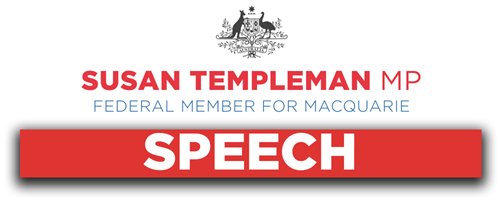
You can't move on the Bells Line of Road or the Great Western Highway some days, and villages in those areas are packed, but at other times they're dead, and businesses are feeling the fragility of it, knowing that at a moment's notice a hotspot declaration might close the entire area down. Any business that relies on people using public transport or on international visitors, like our hop-on hop-off Blue Mountains Explorer Bus, is still seeing nothing like normal levels. In speaking to tourism businesses in the electorate, from Mount Victoria, Megalong Valley and Blackheath in the west, down through both sides of the mountains and up to Colo Heights and St Albans, it's clear there is a real desire by people to get out and support our local businesses and for Sydneysiders to come and visit. But there's also a strong view that the job subsidy that the Morrison government didn't think was necessary until it finally did is helping them either ride the unpredictable waves of business in a COVID world, or is helping them hang in until the seas settle into something more normal—that's if they qualified—and they desperately want that support to continue at the level it's at.
Of course, for us, it came on the back of the worst bushfires we've seen, where peak summer trade evaporated, so most of the businesses have that double whammy. We had an extra one, of course: flood. We've had fire, flood and then COVID. Most tourism businesses think that the level of support needs to be maintained. If you talk to travel agents, their business has done nothing to turn things around. I think, when we're talking tourism, we should also acknowledge pilots, who are in a terribly precarious situation, and they certainly need support. Their industry needs to be maintained so that they're there when we're ready to get on a plane.
There's only so much we can do at a local level, but I've certainly helped get the word out to encourage people to holiday within the electorate, with the holiday-at-home campaign. This is a series of YouTube videos showcasing the lesser known gems of our region—the tearooms and wineries of the Megalong; the mum and dad businesses that dot the entire Blue Mountains and Hawkesbury; the hideaways and local produce of Colo; the history and wines of Ebenezer; the contrast of the bustling retail in Blackheath and the solitude of the bush; the sweep of the Macdonald River in St Albans; and original art in Wisemans—all wonderful things to go and explore. I will continue this series in coming weeks and months until confidence returns to the local tourism sector.
Of course, COVID and fires compel us to think big. Twenty years ago there was a plan for a Bilpin visitor centre to educate about the then brand new World Heritage declaration for the Great Blue Mountains. It didn't happen. A little over a year ago, some locals raised the possibility, to mark the 20th year of World Heritage, of reviving the plan. They met with the mayor and the council wrote to the New South Wales government about it, but not much has come back. Now is the time to be resurrecting this project. It is an opportunity to educate people who visit the Hawkesbury side of the World Heritage, about world heritage—what it is, how it's recovering from the fire, what tourists can do and shouldn't do, who it's first inhabitants were, and their history and spiritual connection and what local businesses offer—and it should provide much-needed facilities for tourists to have a comfort stop.
The bushfires highlight the need for the wider population of Sydney to have a greater understanding of the environment in which my community lives. Our tiny settlement is surrounded by 1.3 million hectares of unique native bush, home to a third of the world's eucalypt forests. This is a key reason that millions of people visit the region. Eighty per cent of this region was burnt by fires. Some of it's recovering fast; others not so. One thriving koala population is now estimated to be less than 10 koalas. There are suggestions that a revised plan of the Bilpin centre could include a base for scientists and National Park staff to support and study this fragile population.
Just as the museum and art gallery of the Northern Territory, in Darwin, provides an opportunity to understand what a cyclone is like, with its Cyclone Tracey exhibit, so could we give people a taste of the Gosper Mountain fire and the recovery. There is audio from the Rural Fire Service radio channels and there's video. There would be educators, firefighters and parks personnel much better placed t


